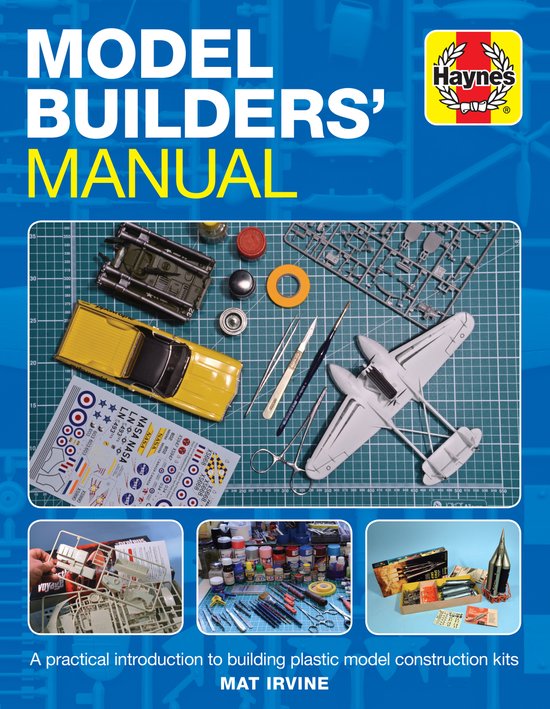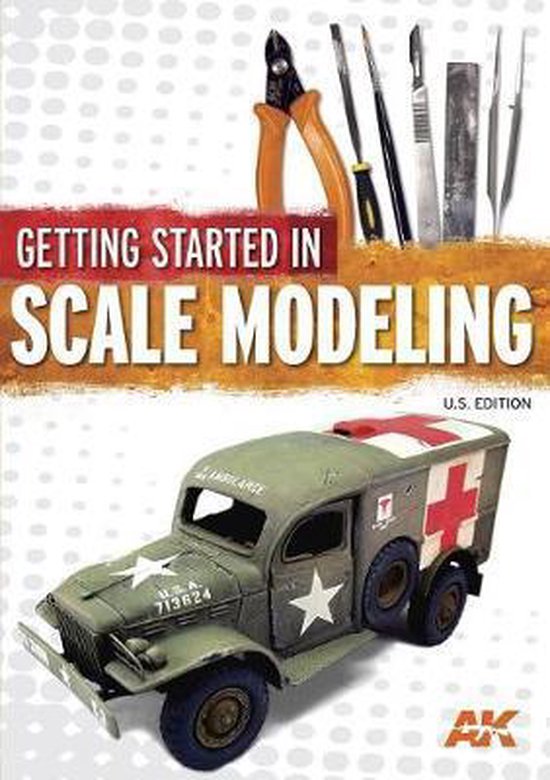
Model Builders' Manual
This manual looks at model kit manufacture and design, and provides advice on model-building tools and techniques. Coverage includes tools, adhesives, paint, decals, basic building techniques, displays and dioramas. A comprehensive introduction for novice builders, plus expert advice for those experienced modellers who wish to hone their skills.
Model-making is centuries old, but the introduction of polystyrene – a stable plastic – in the mid-20th century, provided the opportunity to make the ‘plastic construction kit’ available to the amateur model-maker. Nearly 70 years later, despite suffering from ups-and-downs, the vibrant plastic model-making scene has grown tremendously and is now a world-wide hobby. This manual takes the reader through how modern model kits are designed and manufactured, how the scale is decided upon (most modern kits are made to established scales so that models and accessories are compatible with one another), as well as providing advice on model-building tools and techniques. The down-to-earth text, complemented by numerous photographs, provides details of the ideal ‘workshop’ set-up for building models; tools and adhesives required; paint types and application techniques – from brushing to using aerosol cans, airbrushing and paint booths; the wide variety of decals available, and how to make your own; basic building techniques, and how to construct dioramas to put models into an appropriate ‘setting’. In recent years the growth of ‘multi-material’ kits has become far more common, and details are provided of ‘non-plastic’ materials, such as resins, white metal and photo-etch parts, all of which need to be dealt with slightly differently to polystyrene. A comprehensive introduction for those new to model-making, along with expert advice for those already experienced in making models who wish to hone their skills. • The world of model making History of model-making, kit manufacture, scales, model ranges. • Model building Places to work, tools, adhesives, paint, decals, basic building techniques, displays and dioramas, advanced techniques and alternative materials, collecting kits, clubs, competition, displays and photography. • Useful contacts Model companies and suppliers.
Model-making is centuries old, but the introduction of polystyrene – a stable plastic – in the mid-20th century, provided the opportunity to make the 'plastic construction kit' available to the amateur model-maker. Nearly 70 years later, despite suffering from ups-and-downs, the vibrant plastic model-making scene has grown tremendously and is now a world-wide hobby., This manual takes the reader through how modern model kits are designed and manufactured, how the scale is decided upon (most modern kits are made to established scales so that models and accessories are compatible with one another), as well as providing advice on model-building tools and techniques. The down-to-earth text, complemented by numerous photographs, provides details of the ideal 'workshop' set-up for building models; tools and adhesives required; paint types and application techniques – from brushing to using aerosol cans, airbrushing and paint booths; the wide variety of decals available, and how to make your own; basic building techniques, and how to construct dioramas to put models into an appropriate 'setting'., In recent years the growth of 'multi-material' kits has become far more common, and details are provided of 'non-plastic' materials, such as resins, white metal and photo-etch parts, all of which need to be dealt with slightly differently to polystyrene., A comprehensive introduction for those new to model-making, along with expert advice for those already experienced in making models who wish to hone their skills., • The world of model making History of model-making, kit manufacture, scales, model ranges., • Model building Places to work, tools, adhesives, paint, decals, basic building techniques, displays and dioramas, advanced techniques and alternative materials, collecting kits, clubs, competition, displays and photography., • Useful contacts Model companies and suppliers., Author: Mat Irvine has been involved with model making over most of his lifetime. He moved from 'amateur' to 'professional', when he joined the BBC Visual Effects Department. Here, the work covered all aspects of special effects, including model making, and he designed 'miniature' sequences for Doctor Who and Blake's 7, and science programmes including Tomorrow's World, Horizon and The Sky at Night., Mat regularly appeared in front of cameras for Saturday morning programmes such as Swap Shop and Saturday Superstore, demonstrating model-building techniques., Mat has acted as a consultant with many of the model-making companies around the world. He has written 15 books, a number on model building, and many hundreds of articles for model magazines.
Model-making is centuries old, but the introduction of polystyrene – a stable plastic – in the mid-20th century, provided the opportunity to make the ‘plastic construction kit’ available to the amateur model-maker. Nearly 70 years later, despite suffering from ups-and-downs, the vibrant plastic model-making scene has grown tremendously and is now a world-wide hobby. This manual takes the reader through how modern model kits are designed and manufactured, how the scale is decided upon (most modern kits are made to established scales so that models and accessories are compatible with one another), as well as providing advice on model-building tools and techniques. The down-to-earth text, complemented by numerous photographs, provides details of the ideal ‘workshop’ set-up for building models; tools and adhesives required; paint types and application techniques – from brushing to using aerosol cans, airbrushing and paint booths; the wide variety of decals available, and how to make your own; basic building techniques, and how to construct dioramas to put models into an appropriate ‘setting’. In recent years the growth of ‘multi-material’ kits has become far more common, and details are provided of ‘non-plastic’ materials, such as resins, white metal and photo-etch parts, all of which need to be dealt with slightly differently to polystyrene. A comprehensive introduction for those new to model-making, along with expert advice for those already experienced in making models who wish to hone their skills. • The world of model making History of model-making, kit manufacture, scales, model ranges. • Model building Places to work, tools, adhesives, paint, decals, basic building techniques, displays and dioramas, advanced techniques and alternative materials, collecting kits, clubs, competition, displays and photography. • Useful contacts Model companies and suppliers.
Model-making is centuries old, but the introduction of polystyrene – a stable plastic – in the mid-20th century, provided the opportunity to make the 'plastic construction kit' available to the amateur model-maker. Nearly 70 years later, despite suffering from ups-and-downs, the vibrant plastic model-making scene has grown tremendously and is now a world-wide hobby., This manual takes the reader through how modern model kits are designed and manufactured, how the scale is decided upon (most modern kits are made to established scales so that models and accessories are compatible with one another), as well as providing advice on model-building tools and techniques. The down-to-earth text, complemented by numerous photographs, provides details of the ideal 'workshop' set-up for building models; tools and adhesives required; paint types and application techniques – from brushing to using aerosol cans, airbrushing and paint booths; the wide variety of decals available, and how to make your own; basic building techniques, and how to construct dioramas to put models into an appropriate 'setting'., In recent years the growth of 'multi-material' kits has become far more common, and details are provided of 'non-plastic' materials, such as resins, white metal and photo-etch parts, all of which need to be dealt with slightly differently to polystyrene., A comprehensive introduction for those new to model-making, along with expert advice for those already experienced in making models who wish to hone their skills., • The world of model making History of model-making, kit manufacture, scales, model ranges., • Model building Places to work, tools, adhesives, paint, decals, basic building techniques, displays and dioramas, advanced techniques and alternative materials, collecting kits, clubs, competition, displays and photography., • Useful contacts Model companies and suppliers., Author: Mat Irvine has been involved with model making over most of his lifetime. He moved from 'amateur' to 'professional', when he joined the BBC Visual Effects Department. Here, the work covered all aspects of special effects, including model making, and he designed 'miniature' sequences for Doctor Who and Blake's 7, and science programmes including Tomorrow's World, Horizon and The Sky at Night., Mat regularly appeared in front of cameras for Saturday morning programmes such as Swap Shop and Saturday Superstore, demonstrating model-building techniques., Mat has acted as a consultant with many of the model-making companies around the world. He has written 15 books, a number on model building, and many hundreds of articles for model magazines.
| Auteur | | Mat Irvine |
| Taal | | Engels |
| Type | | Hardcover |
| Categorie | | Vrije tijd & Hobby |





